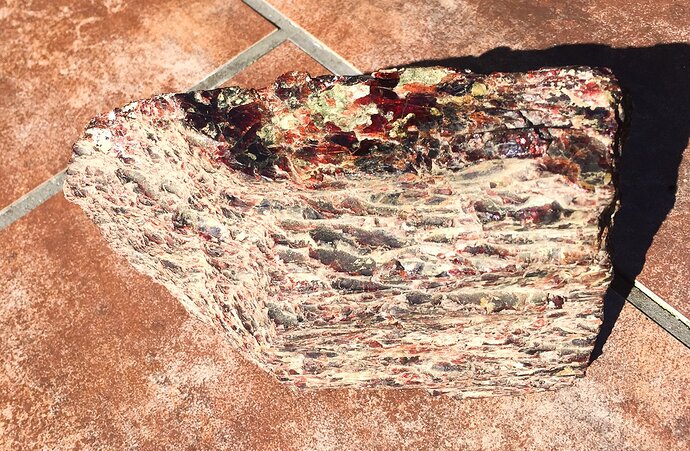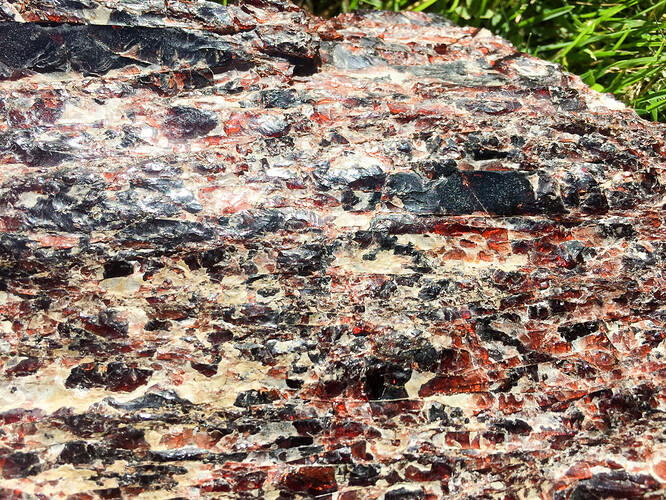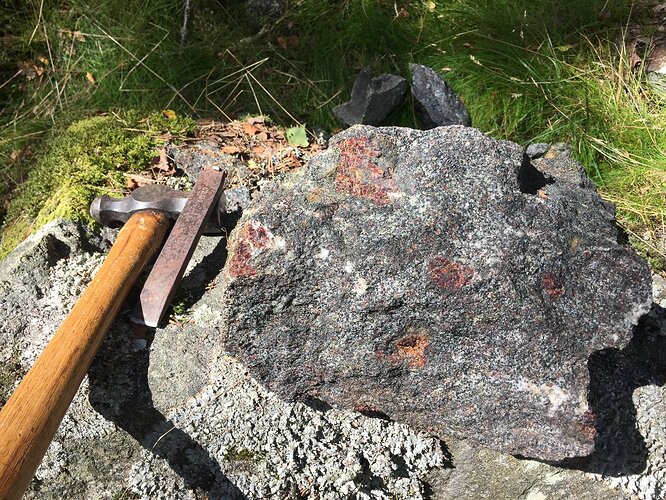Hi Gang,
Here’s an odd question for the hive-mind: does anybody know of any
reagent that’s likely to dissolve granite WITHOUT dissolving the
garnets buried in it?
The reason I ask: I just got back from a trip to Sweden to dig up
some garnets to see if I couldn’t find some of the funny ones that
are rumored to be the ones you need for migration period jewelry.
(they’re weird in that they’re reputed to break into flat slabs
easily, unlike normal garnet, which just shatters.) So I dragged my
tail to the top of a mountain in Sweden, chisel in hand, and chopped
some samples out. The problem with this is that the garnets are
buried in a granite matrix, which is harder than they are, in terms
of bashing through the mountainside with a steel chisel. So I’ve got
samples, but most of them are buried in granite. Which I could cut
through with a diamond saw, but that’d cut the garnets too, and I’d
like to see what the structure is at the rear face of the garnet
deposit, where it hasn’t been broken up by what was required to
break the granite open in the first place. In some of them, the
granite is shot through with what I think are garnet
micro-crystals, and I’d like to see what those are as well. Which
argues for dissolving the granite.
Any suggestions?
Thanks,
Brian


